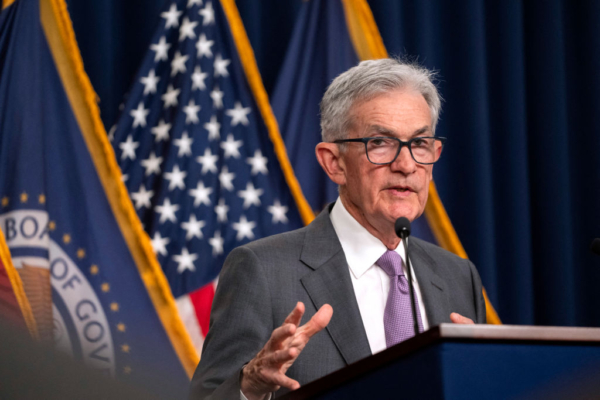The Federal Reserve on Wednesday (August 21) released minutes of the meeting indicating that despite policymakers’ decision to keep rates unchanged at the July meeting, they strongly lean towards a rate cut in September.
According to the minutes released on Wednesday, during the July 30-31 meeting, officials expressed greater confidence in the trajectory of inflation and indicated that if inflation continues to slow, the Fed will start cutting rates.
The minutes also revealed that while all participants in the Federal Open Market Committee voted to maintain the benchmark interest rate in July, some officials were already inclined to announce a rate cut in July instead of waiting until September.
“Several participants believed that recent developments in inflation and the rise in unemployment rate provided what seemed to be a reasonable justification for lowering the federal funds rate by 25 basis points at this meeting,” the minutes said. “The majority viewed that if the data continues to meet expectations, it would be appropriate to ease policy at the next meeting.”
The minutes highlighted an awareness among decision-makers that the risks to achieving inflation and employment objectives are now roughly balanced. Federal Reserve Chair Jerome Powell stated in a news conference on July 31 that before lowering rates, the FOMC is seeking “greater confidence” in inflation moving towards the 2% target.
The current federal funds rate target range is 5.25% to 5.50%, the highest level in 23 years.
Earlier on Wednesday, the Bureau of Labor Statistics in the U.S. made preliminary revisions to the nonfarm employment data for the period of April 2023 to March 2024, lowering the initially reported 2.9 million jobs by 818,000. This marks the largest downward revision since the global financial crisis, indicating a potentially more pronounced weakness in the labor market than previously assumed.
“Most participants noted that the risks to the employment goal had increased, with many participants pointing out that the risks to the inflation goal had decreased,” the July minutes stated, with some participants indicating that further slackening of labor market conditions could result in more serious deterioration.
Bloomberg reported that these discussions indicate the FOMC has begun to shift towards risk management in the labor market. While a 25-basis-point rate cut in September marks a modest adjustment towards normalization, some analysts suggest the Fed needs to accelerate the pace of rate cuts to ensure a soft landing for the U.S. economy.
The report cited Priya Misra, Managing Director and Investment Portfolio Manager at JP Morgan Asset Management, who said, “if the risk is that the labor market deteriorates, then you should move faster – several 50-basis-point moves – until you get back to neutral.”
A report released by the U.S. Department of Labor on August 2 showed that nonfarm payrolls increased by 114,000 in July, well below expectations and the average monthly gain over the previous 12 months (215,000). The unemployment rate rose to 4.3%, its highest level since October 2021. These figures have raised concerns of an economic downturn as investors worry that the data indicates a rapid weakening of the economy.
Rick Rieder, from investment management company BlackRock, told Bloomberg that the Fed should have actually cut rates in June. He believes that keeping rates unchanged has come at a cost for the economy. However, the current economic conditions are still relatively strong.

